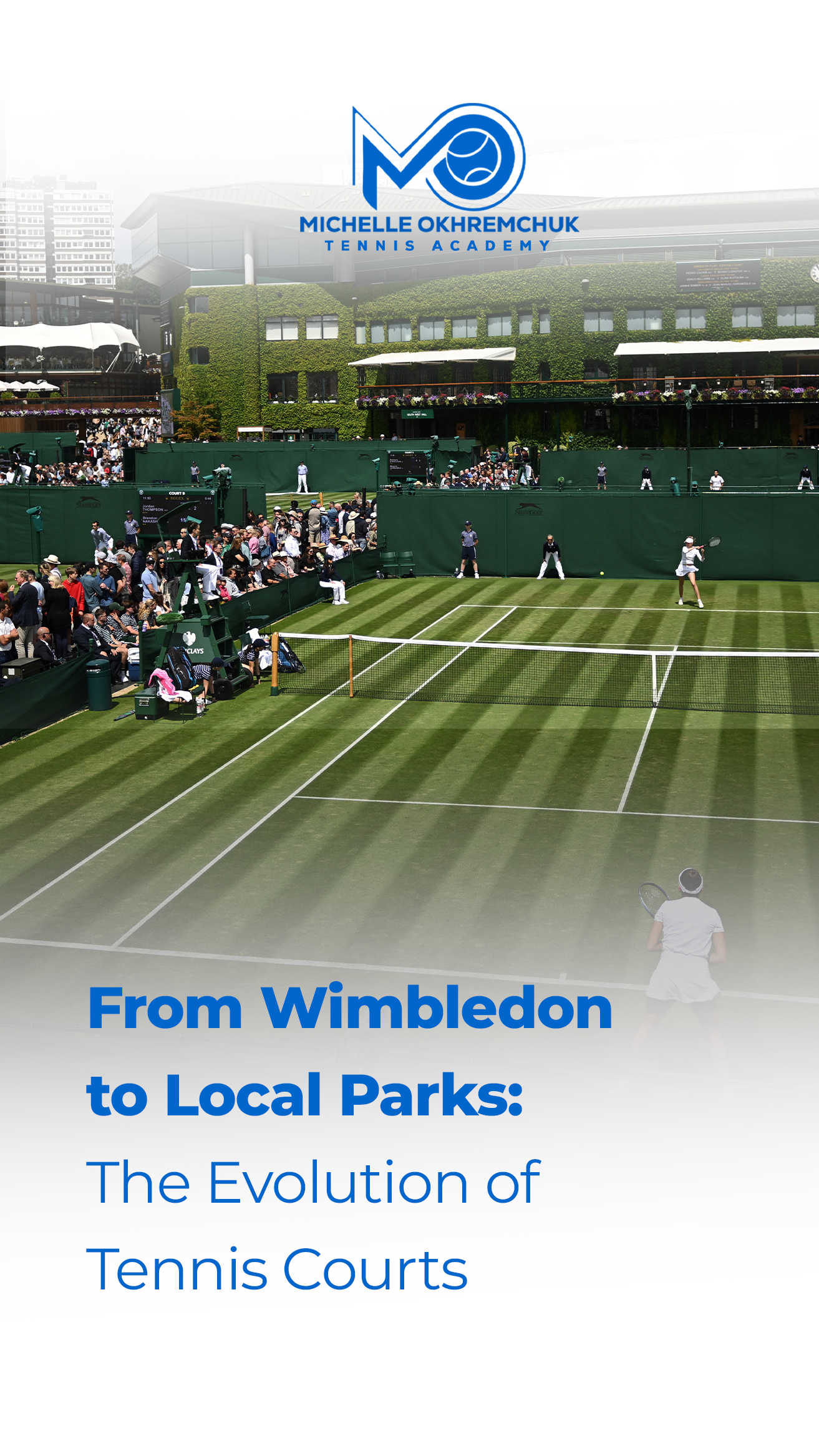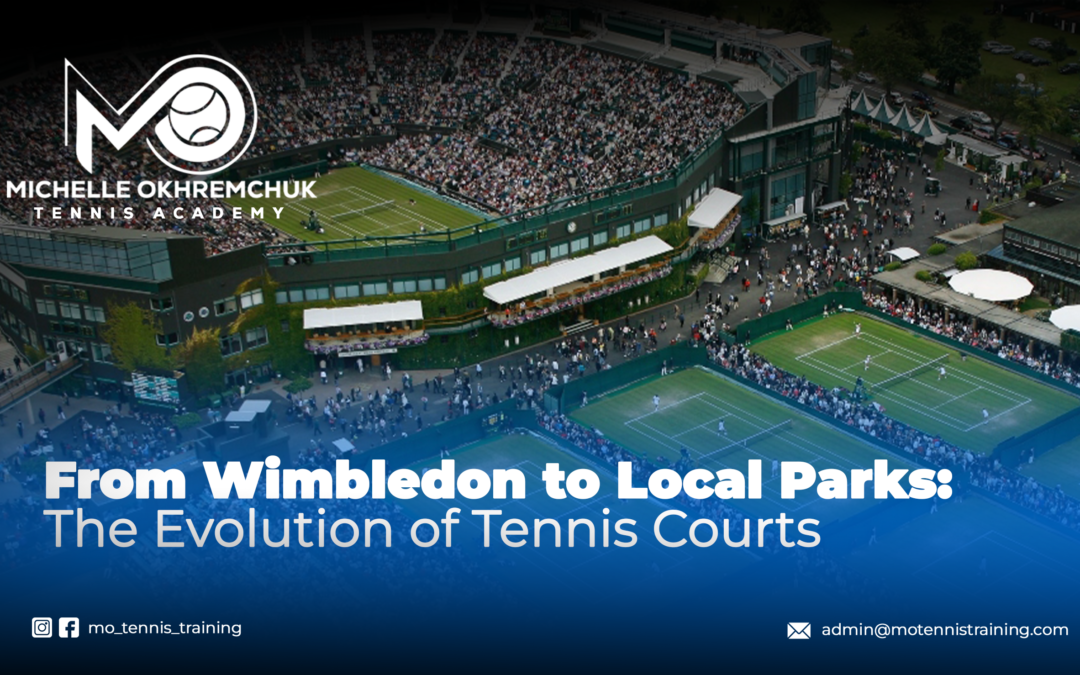Embark on a journey through time, where the humble beginnings of tennis in medieval monastic cloisters unfold into the grandeur of today’s prestigious tournaments. From the tranquil grounds of 11th-century French monasteries, where monks leisurely played the precursor to tennis, to the courts of kings and queens, tennis has evolved into the globally cherished sport we know today.
In the serene cloisters of medieval Europe, monks engaged in “Jeu de Paume,” the “Game of the Hand,” striking balls back and forth, laying the groundwork for tennis’s origins. The spirited cry of “tenez!” echoed through the centuries, signaling the commencement of play and inspiring the name of the sport we cherish.
As tennis gained favor among nobility, it found a fervent patron in King Louis X of France, who championed the game and built its first indoor courts. English royalty, too, succumbed to its allure, with Henry VIII’s fervent passion for the sport immortalized in the historic courts of Hampton Court Palace.
Through the centuries, tennis flourished, with advancements in equipment and court surfaces reflecting its evolution. From wooden rackets to sleek modern designs, from grass courts to acrylic surfaces, each innovation has shaped the game we adore.
Join us as we trace the captivating evolution of tennis courts, from the rustic simplicity of medieval times to the refined elegance of Wimbledon and beyond.
From Wimbledon to local parks, discover the diverse landscapes where tennis has thrived, transcending time and boundaries to captivate generations of players and fans alike.
Early forms of tennis court construction
The early forms of tennis court construction were vastly different from what we see today. In fact, the origins of tennis date back to ancient times, with evidence of similar games being played by civilizations such as the Egyptians and Greeks.
One early form of a tennis court involved using large open spaces, often in palace courtyards or gardens. These courts would be marked out with lines or boundaries to define the playing area. The surface was usually natural grass or hard-packed earth.
As the popularity of tennis grew throughout Europe in the 16th century, more formalized court structures began to emerge. These courts were typically rectangular in shape and featured walls on three sides, known as “real” or “royal” tennis courts.
The surfaces of these early courts varied depending on location and available materials. Some had a layer of sand or gravel over a compacted earth base, while others used wooden boards covered with cloth or carpeting for added traction.
It wasn’t until later centuries that grass became the preferred surface for elite players, particularly at prestigious events like Wimbledon. Grass courts offered a fast-paced game but required constant maintenance due to their delicate nature.
Early tennis court construction was rudimentary compared to modern standards. However, it laid the foundation for innovations in design and technology that have transformed tennis into the sport we know today.
How Wimbledon set the standard for modern tennis courts
Few places hold as much prestige and history as the All England Lawn Tennis and Croquet Club, better known simply as Wimbledon. This iconic tournament has not only shaped the sport but also set the standard for modern tennis courts.
In its early years, Wimbledon was played on grass courts, a tradition that continues to this day. These meticulously maintained surfaces provide a unique playing experience characterized by their smoothness and speed. Grass courts offer players quick ball bounces and require precise footwork due to their slippery nature.
Another key feature that sets Wimbledon apart is its use of white lines rather than colored ones. This deliberate choice creates a stark contrast against the green grass surface and allows for better visibility both for players and spectators.
But perhaps one of the most significant contributions made by Wimbledon to modern tennis court construction is its attention to detail in terms of dimensions. The dimensions used at Wimbledon have become the international standard for all tennis courts worldwide.
The impact of this standardization cannot be overstated. It ensures consistency across tournaments globally, allowing players to adapt more easily when transitioning between different venues. Additionally, standardized court dimensions enable fans to compare performances across tournaments accurately.
The impact of technology on tennis court surfaces
The impact of technology on tennis court surfaces has been nothing short of revolutionary. With advancements in materials and construction techniques, tennis courts have become more durable, consistent, and player-friendly.
One major technological advancement is the introduction of synthetic grass or “artificial turf” for tennis court surfaces. This innovative material provides a more uniform playing surface that allows players to move with ease and reduces the risk of injury.
Synthetic grass also requires less maintenance compared to traditional grass courts, making it a popular choice for both professional and recreational players.
Another significant development is the use of cushioned court systems. These specialized surfaces feature layers of shock-absorbing materials that help reduce stress on players’ joints and muscles, allowing for longer and more comfortable gameplay. Additionally, cushioned courts provide excellent ball bounce consistency, ensuring a fair game for all skill levels.
In recent years, we’ve also seen the rise of clay court technologies. Clay courts have long been favored by many professional players due to their unique playing characteristics. However, traditional clay can be challenging to maintain as it requires frequent watering and grooming. To address these issues, new types of synthetic clay have been developed that offer better durability while still providing similar playing conditions as natural clay.
Cutting-edge innovations such as smart sensors embedded into tennis court surfaces allow for advanced data collection during matches or practice sessions. These sensors can track player movement patterns, ball speed and spin rates, helping coaches analyze performance metrics in real-time.
Eco-friendly and sustainable tennis court options
Traditional tennis courts are often made with materials that contribute to pollution and waste, but there are now alternative options available.
One such option is using recycled or reclaimed materials for the construction of tennis courts. This not only reduces the demand for new resources but also prevents discarded materials from ending up in landfills. For example, some companies use recycled rubber to create a cushioned surface for tennis courts, providing an eco-friendly alternative to traditional hard courts.
Another sustainable option is utilizing permeable surfaces for tennis courts. These surfaces allow rainwater to pass through them instead of creating runoff that can lead to water pollution. Permeable surfaces also help reduce heat island effect by allowing excess heat to escape rather than being trapped on the court’s surface.
Incorporating renewable energy sources into the design and maintenance of tennis courts can significantly reduce their environmental impact. Solar panels can be installed nearby or on top of structures surrounding the court, providing clean energy for lighting and other electrical needs.
Landscaping around tennis courts plays a crucial role in sustainability efforts. Planting native vegetation helps conserve water by requiring less irrigation while attracting local wildlife and promoting biodiversity.
Eco-friendly and sustainable tennis court options not only benefit our planet but also provide players with a healthier playing environment. As awareness continues to grow about these alternatives, it is likely we will see even more innovative approaches developed in the future
The rise of community and public tennis courts
Gone are the days when tennis was considered an exclusive sport played only by elites on private courts. In recent years, there has been a remarkable rise in community and public tennis courts, making the sport more accessible to people of all backgrounds and skill levels.
Community tennis courts have become gathering places where individuals can come together to enjoy the game and engage in friendly competition. These courts are often located in local parks or recreation centers, providing a convenient and affordable option for those interested in playing tennis.
The popularity of community and public tennis courts can be attributed to several factors. First, they offer a cost-effective alternative to joining private clubs or facilities. Many public tennis courts are free or charge a nominal fee for court time, allowing individuals who may not have access to expensive memberships to still enjoy the game.
These communal spaces promote inclusivity by welcoming players of all ages and abilities. Whether you’re a seasoned player looking for some friendly competition or a beginner wanting to learn the basics, community tennis courts provide an environment that encourages participation and growth.
Public tennis courts serve as hubs for social interaction and community building. They create opportunities for people from diverse backgrounds to come together around their shared love for the sport. It’s not uncommon to see parents teaching their children how to play or groups of friends enjoying a casual game on these open-air venues.
As we witness this rise in community-oriented sports infrastructure such as public tennis courts across different regions globally – including places like San Diego with initiatives led by organizations like Mo Tennis Training Academy founded by Michelle Okhremchuk – it becomes evident that accessibility is vital for nurturing talent at grassroots levels.
Conclusion
The future of tennis courts looks bright, with advancements in technology and a growing emphasis on sustainability. As the sport continues to evolve, so too will the design and construction of tennis courts.
With the rise of eco-friendly materials and practices, we can expect to see more sustainable options for tennis court surfaces. These environmentally-conscious choices not only benefit the planet but also provide players with improved performance and safety.
From humble beginnings to grand stadiums like Wimbledon, tennis court construction has come a long way. The evolution of these spaces reflects not only changes in technology but also shifts in societal values towards sustainability and inclusivity.
As we look ahead to the future, it is clear that tennis courts will continue to play a vital role in shaping the sport’s growth while providing athletes with exceptional venues to showcase their skills.


